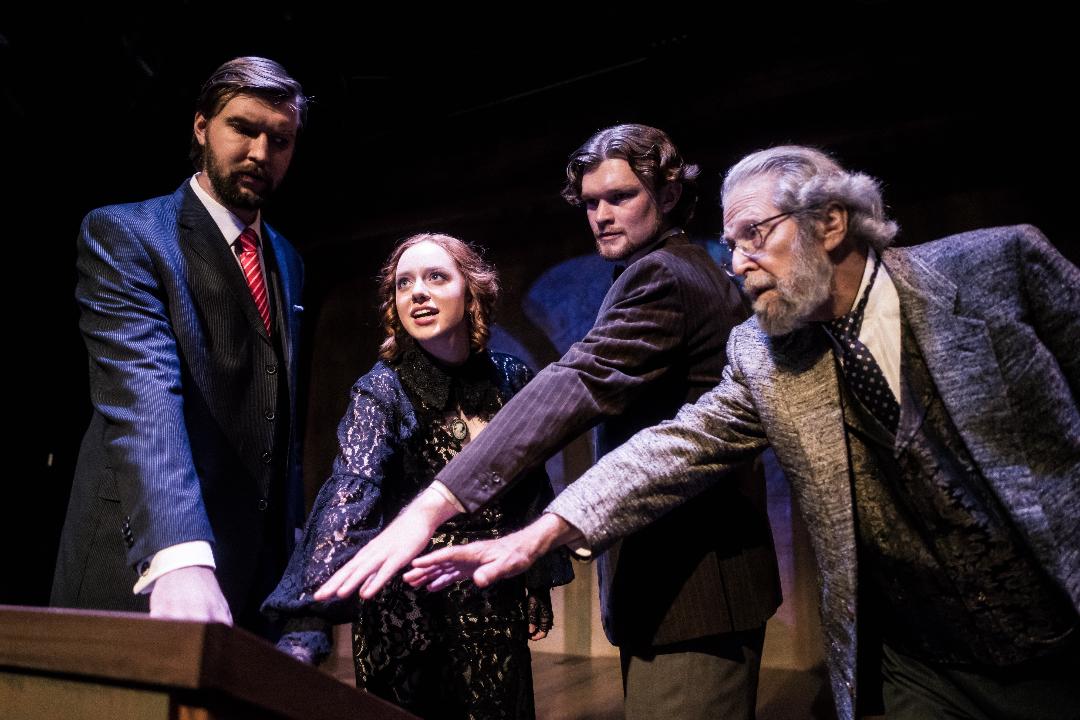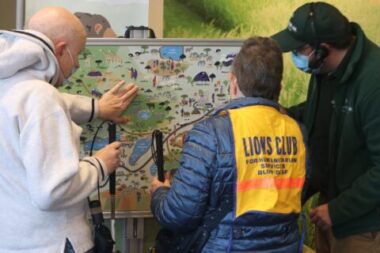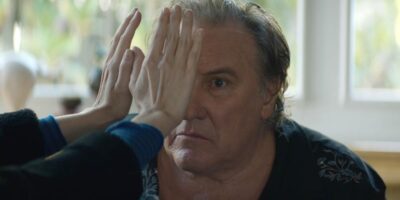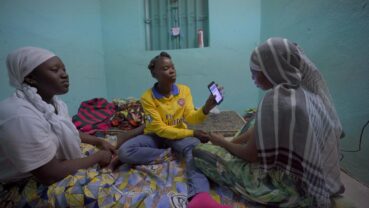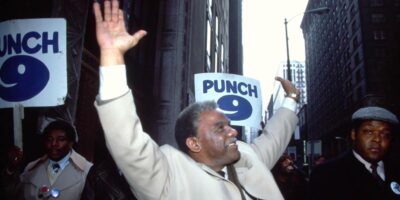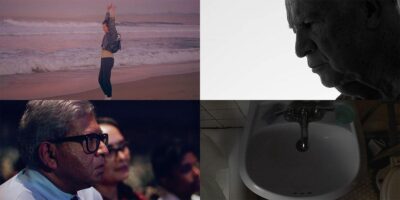
Mary Ernster, Christopher Kelley, Sean Donovan, Andre Malcolm, J. Harrison Ghee, DeMarius R. Copes, Jarvis B. Manning Jr. and Wes Olivier in “Midnight in the Garden of Good and Evil” at the Goodman Theatre. (Photo by Liz Lauren)
Highly Recommended
It would be a crime to miss this.
Without a doubt “Midnight in the Garden of Good and Evil” is the best musical I have seen in years. You will be hearing a lot about this for some time as word spreads of this world premier production currently at the Goodman Theater.
The action begins, revealing a spectacular Spanish moss draped dimly lit atmospheric set design by Christopher Oram worthy of a grand opera.
We come to learn in the opening number “Bonaventure” that we are in an aged cemetery in Savannah, Georgia. Voodoo practitioner, Minerva (Brianna Buckley) wails a ghostly incantation as various figures move silently among the monuments.
As the lights become full, the tone shifts. It is daylight and Jim Williams (Tom Hewitt) continues the song explaining where we are and introducing us to some of the quaint customs of Savannah society including the reverence for the past and importance of social drinking.
Over the course of the play, we learn that Jim Williams is a gay antiques dealer and nouveau riche restorer of homes. His pride and joy is the restoration of Mercer House, a stately but at one point quite neglected derelict mansion built by the great-grandfather of famed composer Johnny Mercer.
The Mercer connection is interesting because “Midnight in the Garden of Good and Evil” is based on a true story. In fact, it is a “true crime story” that interweaves high society with a number of alternative lifestyle individuals and others considered outside the elite social strata including a gay man and his “white trash” lover, a drag queen and an African American debutante.
The 1980s era high society Savannah ladies led by Emma Dawes (Sierra Boggess), fond of mentioning her invitation to the White House, intersect with the rest through Williams and a mutual love of restoring old Savannah homes.
This is not a whodunnit. We come to learn soon enough who did it. Rather this is a story of restoration. Not only the restoration of houses but also the quest to restore one’s life and indeed, one’s soul.
The parallel story is that of “The Lady Chablis” (J. Harrison Ghee), a popular drag queen who treats the audience to a very enjoyable and frank performance at “The Shed” where she is the headliner.
Lady Chablis loses her job after a particularly bawdy performance, setting her on a quest to restore what she perceives to be her deserved station in life.
The story is not too complicated. It’s there to move the action, and this show is all about the action presented as a series of vignette performances that are more like Burlesque scenes, any one of which would wow a Las Vegas nightclub in the 80’s.
Keep in mind that this is a period piece that takes place in a very particular place at a very specific time. Some might argue that the portrayal of LGBTQ characters are somewhat two dimensional, even stereotypical, which is how they generally were portrayed at the time. But at least in the 1980s they were beginning to be seen and their stories could begin to be presented to a mainstream public.
Perhaps in the New Millennium we are more enlightened, but for some, indeed many, perhaps not.
The audience’s sympathy for Williams and appreciation for the talent and struggle of Chablis means we are breaking through and seeing these individuals as real people not simply cardboard cutouts.
Jason Robert Brown’s music and lyrics are phenomenal and inspired, harkening back to the Great American Songbook and jazz stylings of the twentieth century.
One lyric describing Savannah says something like “If your idea of an auntie leans toward antebellum . . .” is vintage tin pan alley. Perhaps inspired by Mercer and others there are notes of Sondheim as well.
But this work is not derivative. It is fresh and unique. Each number is expertly performed by arguably one of the most impressive performance companies to grace a Chicago stage in recent memory. From Ghee and Hewitt at the top through to every swing dancer, each performer is top-notch. When this show moves to Broadway which it undoubtably will, it should run for years.
When Buckley as Minerva begins her incantation, we know this is going to be interesting but when Hewitt begins his part of “Bonaventure” with his amazing voice we know we are in for something special.
Likewise with Ghee as Chablis. When she does her number “The Shed Shack” buckle up because we’re going on an unexpected ride. “Let There Be Light” in the first act is a show stopper and “Butterflies” was a touching and fitting finale.
Boggess as Dawes offers much of the comic relief but her impressive soprano gives her songs added dimension that takes them beyond novelty numbers.
“Lift Her Up” led by Bobby Hutchins with dance performance by ingénue Lavella Cole and company is likely to become a staple at every cotillion, bat mitzvah, sweet sixteen, graduation and some weddings.
Congratulations to The Goodman for assembling such a high caliber cast of performers and production team from the set design (including a spectacular chandelier), lighting, music, costumes (Toni-Leslie James) to the outstanding choreography of Tanya Biri-Torres aided by incredible swing dancers who were able to execute their moves – all brought together in a seemingly effortless fashion by Director Rob Ashford with Musical Direction by Thomas Murray.
Opening night was one to remember. John Berendt, the author of the best-selling book, was on hand for the curtain call and to see this new musical version written by Taylor Mac come to life. The excitement of the evening spilled out into the street as people chattered about what a great time this was.
This show runs nearly 3 hours including a 15-minute intermission. Likely they will find a few more cuts and trims as they see what works and what doesn’t but I would hate to be the one making those decisions. Every number is a gem.
Details: “Midnight in the Garden of Good and Evil” is at The Goodman Theatre, 70 N Dearborn St, Chicago, IL 60601, extended through August 11, 2024. Running time: about 2 hours, 45 minutes with one 15 minute intermission. For tickets and information visit https://www.goodmantheatre.org or call the box office at (312) 443-3800 (12noon – 5pm daily).
By Reno Lovison
For more shows visit Theatre In Chicago




